Planting and caring for a stone rose
The ability to maintain the freshness and attractiveness of a leafy rosette and numerous children - these qualities make the stone rose popular among flower growers. An unpretentious plant takes root on any soil and in any conditions. The main thing is to create favorable conditions and correctly carry out agrotechnical measures.
Short description
Stone rose is a perennial succulent, which is also called rejuvenated, the Latin name is Sempervivum. Small rosettes are formed from fleshy leaves, depending on the type or variety, they grow up to 10-150 mm. Succulent foliage is alternate and elongated. The tips are sharp, with small cilia at the edges. Lateral shoots elongated in shape with small foliage rosettes quickly die off.
Interesting fact
Stone rose is called and houseplant echeveria, which is also a succulent and outwardly similar to the juvenile, but constitutes a separate genus Echeveria.
The stems are straight, covered with a growth of short glandular hairs. Flowers have a regular shape, resembling a star with a large number of rays. They are bisexual and are collected in corymbose or paniculate inflorescences. Plump, fleshy sepals may be bare, but more often overgrown with short hairs.
The petals are wider at the bottom, taper in the upper part, they are longer in size than the sepals. By color, depending on the variety, they are red, purple, yellow, but more often - different shades of green. Petals are formed from 16 to 40, several times less than stamens. The latter grows opposite the petals and are fixed at their base. The flattened stamens are bare and with a small fluff. The anthers are slightly elongated in shape and resemble a hen's egg.
Variety selection and planting
The stone rose blooms only in the third year of its growth in the flower bed. The budding period is only 30-45 days, after which the flower dries up, but "children" are already growing in its place.
The genus rejuvenated includes about 50 species and an even greater number of varieties. Before proceeding with planting, we will choose the variety that is most suitable for the site. A brief description of the most popular varieties and species is shown in the table below.
Table. Popular varieties and types of stone roses
Name Short description Rejuvenated roofing This is one of the most common flower varieties. In the wild, it is found in European countries, where it was used for roofing. The rosette of leaves can be spherical or flattened. Plant size - 40-150 mm, it blooms in July or August. The tops of pointed fleshy leaves are colored red Wolfen It grows on the slopes of the Alps at an altitude of 2700 m above sea level. Foliage rosettes are small, their diameter is only 40-50 mm. Leaves with a glossy green surface, tips with a reddish tint, small cilia grow along the edges. Elongated and rigid shoots are drawn from the mother flower, on which daughter rosettes grow. During budding, wulfena throws out flower stalks 250 mm long, at the ends of which bright yellow petals bloom with a burgundy spot at the base Lime An incredibly beautiful plant with very thin leaves. The size of the rosettes is up to 80 mm. The leaves are colored bluish-green, pearlescent color. The sharp tips of the leaves are black or brown. When blooming, pink flowers bloom, but compared to other varieties and species, there are not very many of them. Scion The rosettes of the plant are spherical and small, maximum 50 mm. The foliage is light green in color.When budding, in mid-July, yellowish or light green flowers collected in inflorescences are formed Russian It is found in the European part of our country, in the Balkans and in Asia Minor. Rosettes grow up to a maximum of 60 mm, with foliage pointed at the edges, elongated in shape. Peduncles - up to 350 mm in size, covered with fluff on the front and inside. In early July, yellow flowers bloom on the arrow, collected in corymbose inflorescences. The duration of budding is up to 2 months. Cobweb stone rose A small fluff grows on the leaves of these flowers, forming a kind of cobweb - from this the name came. Young spiderweb grows on the slopes of the Caucasus Mountains. The miniature rosettes are only 30 mm in diameter. Flowers - with a reddish tint. Landing conditions
Having decided on the variety, you need to prepare the conditions for growing a flower. There are few of them, because they rejuvenated hardy and not capricious.
Landing site. This plant can take root anywhere in the garden, adapt to severe frosts in winter and heat in summer. The only recommendation at this point is to settle the young in a place where the sun's rays will illuminate it throughout the day. In the shade and partial shade, the plant will develop, but will lose a significant part of its decorative effect. For this reason, you should not plant a stone rose under bushes or trees.
Soil requirements. Since the young is a succulent, it prefers loose or even stony soils, although it will take root well on loam. To protect the roots from moisture stagnation, we fill in a layer of drainage (expanded clay, broken brick or ceramics, fine gravel) at the bottom of the planting holes. Acid soils are poorly tolerated by stone roses - they will have to be limed, as well as top dressing with organic matter and mineral fertilizers.
Planting plants in open ground. Depending on the climatic zone, work can start from the beginning of the first month of spring and plant children until the end of the first month of autumn. But we do not recommend planting the young in the pre-winter period: it should take root well and begin to develop before the onset of the first night frosts.
A succulent will develop well even in a small box or pot - it is convenient to create flower arrangements from such plantings. Rejuvenated enough literally 50-70 mm of land for normal growth. The minimum distance to neighboring flowers is 100-150 mm, this space is necessary for the growth and development of children.
Before transplanting, the grown seedling from the pot is well watered and moved into a hole with a lump of earth on the roots. The baby, separated from the mother plant, is immediately placed in the hole. Then sprinkle with earth, compact a little and water.
Reproduction methods
Planting material of a stone rose is most often obtained by a vegetative method. For this we use the children of an adult plant. So we quickly and without much hassle get a new decoration of our site. A more difficult way is growing from seeds. It will take a long time, so it is more suitable for professional flower growers and breeders.
It rejuvenated and reproduces well itself. If you do not thin out the flower garden with stone roses, they will easily fill all the voids in the flower bed and move on, spreading seedlings around them. Therefore, it is recommended to periodically plant the children or fence the flower bed.
Care advice
A special attitude to the stone rose is not required: the flower simply amazes with its unpretentiousness and endurance. However, there are a few things to consider.
Watering. These works, as with the cultivation of any kind of succulents, are reduced to control over the state of the plant during the established long-term drought. During this time, several waterings are required. In normal weather, it is not required to moisten the plants; they have enough moisture from infrequent rains and settling fog and dew. Plants cannot tolerate permanently wet soil under foliage rosettes.
Top dressing. Fertilizer is applied only when planting in a hole, as part of a soil mixture. This rule applies even when growing young on poor soils. During the season, you need to refuse feeding. Otherwise, the plant will give too many babies, and this will worsen the color and attractiveness of the succulent and will not allow the plant to prepare for winter.
Loosening the soil and weeding row spacings. This operation will need to be performed constantly, especially after the rains, when the "green thunderstorm" begins to rage. Weeds take food from the plant and shade it. Therefore, it is required to immediately free the space from green parasites - a little baby will immediately grow up in this place. Subsequently, the weeds simply will not find a free piece of land for growth. It is better to remove weeds by hand and very carefully.
Works in the pre-winter period. The stone rose does not require additional shelter for the winter and is free to withstand frost, even without a snow cover. However, young seedlings in the first year, especially during autumn planting, must be covered with spruce branches, a layer of peat or fallen leaves. Such plants have not gained strength and may die from low temperatures.
Diseases and pests are not terrible for this succulent.
In conclusion, we will give some recommendations for creating simple architectural compositions on your site.
Small varieties can be planted in the form of a heart - such a composition will add a romantic atmosphere to your garden and become a pleasant gift for your family. An unusual and effective solution is to arrange stone roses in an old jug with a chipped sidewall, a briefcase or a suitcase. You can plant the young in alpine slides, rock gardens or rockeries.
Everywhere, having made a border or a composition of rosettes with colorful leaves, even in an old shoe, you get beauty and uniqueness. It all depends on your imagination. The plant is suitable even for very busy or constantly forgetting about plants growers. The stone rose requires little or no maintenance and thrives in all conditions. The main thing is to create good lighting for, and the plant will delight you with strong and beautiful rosettes with pointed leaves.

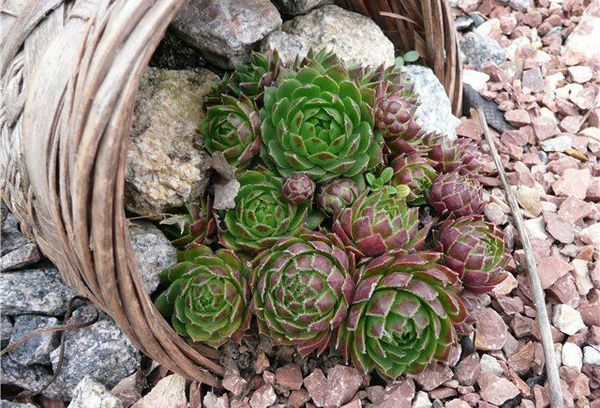
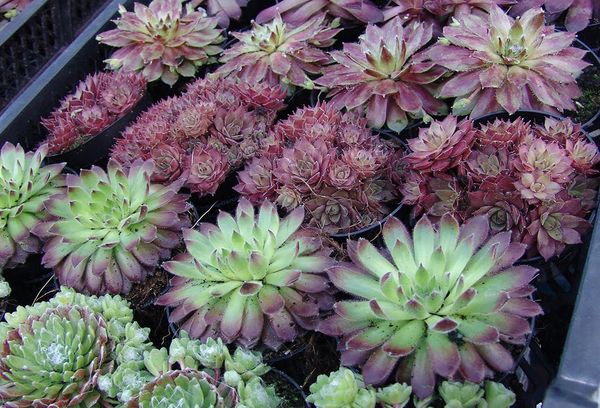
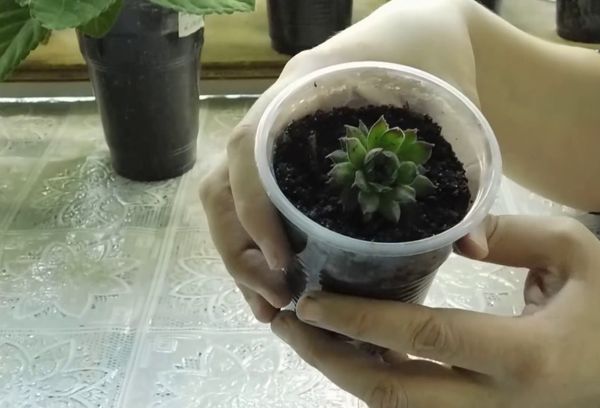
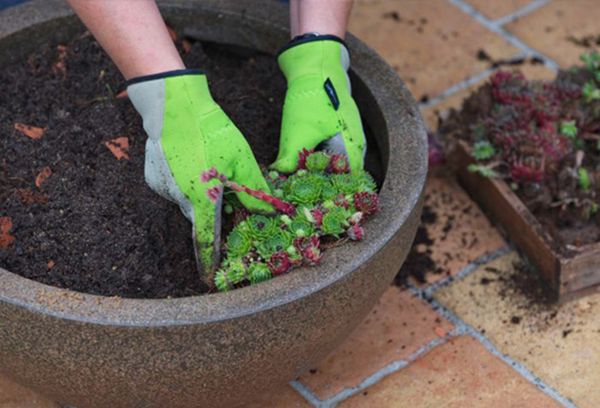
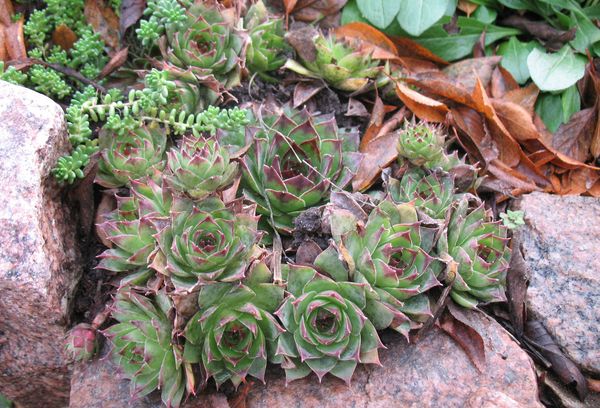
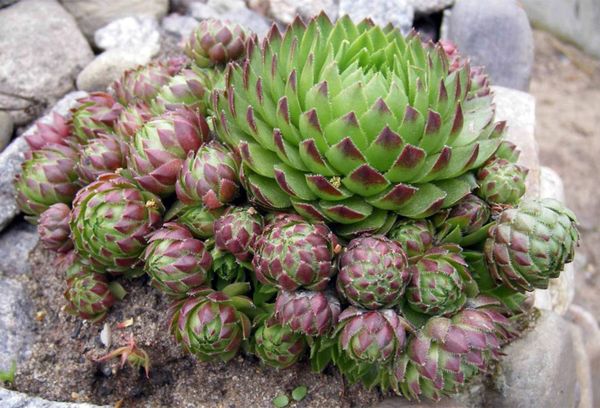
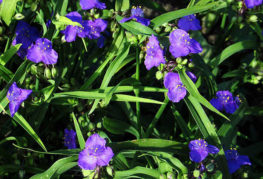
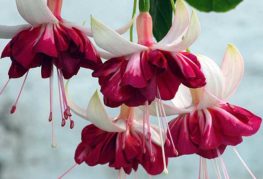
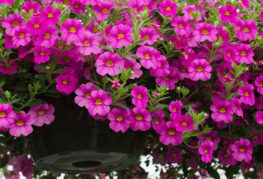
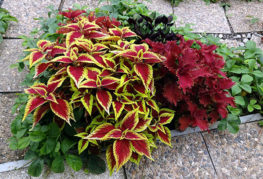


and will be published shortly.